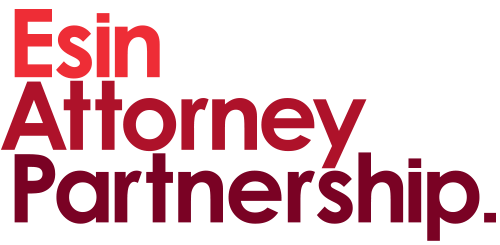New development
The Competition Authority’s (“Authority“) Regulation on Active Cooperation for Detecting Cartels (“Leniency Regulation“) was published in the Official Gazette dated 16 December 2023 and No. 31542 and entered into force on the same day. Following the public opinions on the draft Leniency Regulation that were received until October 2023, the updated Leniency Regulation entered into force, intending to reflect the takeaways from its practical application over the past 14 years for which the former leniency regulation (“Former Regulation“) had been in force (since its promulgation on 15 February 2009).
The Leniency Regulation, while keeping its fundamental stance aligned with its previous version, brought certain important changes in accordance with the developments in Turkish competition law, the results achieved in practice, and the takeaways from the global developments.
Landmark strides
The Leniency Regulation introduces some notable concepts and principles worth mentioning:
A. Cartel facilitators may also benefit from leniency
- The Leniency Regulation introduced a new “cartel facilitator” definition to clarify the Authority’s stance against facilitators as follows “undertakings and associations of undertakings that, without operating at the same level of the production or distribution chain as the cartel members, mediate in the establishment and/or maintenance of a cartel, facilitating the creation and/or continuation of a cartel with their activities“.
- The Authority constantly monitors the market, and holds a tough stance against hub & spoke concerns as shown with its investigations. The newly introduced definition also clarified that the “hub” of a cartel may also benefit from full immunity, and extended Authority’s options to receive a leniency application.
B.Higher expectations: Need to submit “value adding documents”
- In line with the approach in the European Union, the Leniency Regulation now seeks the submission of value adding documents in order for the applicants to benefit from immunity or fine reductions.
- The Leniency Regulation defines value adding documents as “information and documents that will strengthen the Authority’s ability to prove the cartel, considering the evidence that the Board already has“.
- From now on, taking into account the evidence available to the Authority, applicants who would like to benefit from the leniency regime will need to submit documents that put the Authority in a better position to prove the cartel.
- This signifies the Authority’s stricter stance when it comes to the information and documents submitted with leniency applications. The Authority now looks for a cooperation opportunity that would really contribute to its investigation process and strengthen its ability to prove the cartel, and applications that do not go beyond repeating what is already included in the case file may no longer be able to benefit from the leniency regime.
C. A clearer approach regarding the cases to which the Leniency Regulation applies
- The Leniency Regulation now provides that if the leniency application is deemed to satisfy the conditions set out in the relevant provisions of the Leniency Regulation, but the Competition Board (“Board“) ultimately does not characterize the violation as a cartel, the Leniency Regulation would still be applicable. In other words, undertakings whose leniency applications are accepted will be able to benefit from full immunity or reduction in fines even if the violation is not ultimately determined as a cartel in the final decision.
- This amendment aims at bringing a solution to the “nature of violation” problem. This is because the letter of the Former Regulation suggested that the leniency regime was applicable only in regard to cartels. What would happen to leniency applications regarding conduct which the Board ultimately characterized as a horizontal violation not rising to the degree of a cartel was not clear in the Former Regulation and the Board’s practice. In particular, the clear wording of the previous regulation that leniency applications are solely available for cartelists understandably created hesitation for the undertakings in the past for cases where it was not certain whether the conduct constituted a cartel or a lighter form of a horizontal violation (such as pure information exchange not rising to the level of a cartel). Based on the Board precedents, this perception was not in vain. For example, in the Automotive Dealers decision (16 December 2013, 13-70/952-403), the applicant could not benefit from the leniency regime as the infringement was not categorized as a cartel in the end. However, in contrast to its earlier decision, in the more recent Syndicated Loans decision (28 November 2017, 17-39/636-276), the Board granted full immunity to the applicant although the alleged violation was again not classified as a cartel but rather an anti-competitive information exchange. The Leniency Regulation now clarifies the issue by codifying the more permissive recent approach in Syndicated Loans into law.
- Based on the foregoing, this noteworthy revision would be expected to encourage the potential leniency applicants, since they can now hesitate less to submit an application even if they are unsure regarding characterization issues.
- Needless to say, this does not mean that leniency application is now possible for all types of violations. This change is made to secure the opportunity to make a leniency application for horizontal violations that are unclear as to whether or not they constitute a cartel in the early stages of the investigation or at the time of application.
D. A different take on the timings
- Differing from the Former Regulation, the Leniency Regulation introduces a time limit of three months following the receipt of the investigation notice, prior to the receipt of the investigation report. This demonstrates the Authority’s aim to conclude the investigations in a more efficient, time-sensitive manner.
- This three-month limitation is not applied to the investigations launched before the enforcement date of the Leniency Regulation.
- In addition, if the applicant receives/gathers additional information & documents after its application, it can submit these information & documents before the expiration of the second written defense period.
E. An updated approach to administrative fines
The Leniency Regulation widened the range of potential administrative fine reductions. You may find a comparative table between the Former Regulation and the Leniency Regulation below:
| Fine Reduction (%) | Former Regulation | Leniency Regulation |
| First Applicant | 33.3% – 50% | 25% – 50% |
| Second Applicant | 25% – 33.3% | 20% – 40% |
| Others | 16.6% – 25% | 15% – 30% |
Surely, as given above, the Authority indicated that it will certainly take into account the weight of the value adding documents in a much more precise manner during its fine reduction assessments.
The Leniency Regulation also provides that if one undertaking’s leniency application is not accepted because the documents submitted by this undertaking do not qualify as value adding documents, the information and documents that it submitted will be excluded from the scope of the file and will not be used as a basis for the final decision to be rendered at the end of the investigation.
F. Reaching out to the former employees
The Leniency Regulation introduced a principle that was already set out in para. 46 of the Guidelines On the Explanation of the Regulation On Active Cooperation for Detecting Cartels as an explicit clause (“Guidelines“). While the Guidelines mentioned an expectation from the applicant undertakings, that the previous managers and employees must be made available for explanations if possible; this is now listed among the conditions for an applicant to benefit from leniency as per Article 6 of the Leniency Regulation.
Conclusion
The Leniency Regulation demonstrates the Authority’s growing nature and sets forth the updated principles for leniency procedures. These changes may increase the number of leniency applications, bring compelling gains to the Authority in terms of reduced fine amounts, and save on time and resources arising from the full-fledged investigations.
In closing, it should be noted that, for investigations already ongoing, the provisions of the regulation that are favorable to the applicant will be applied.






